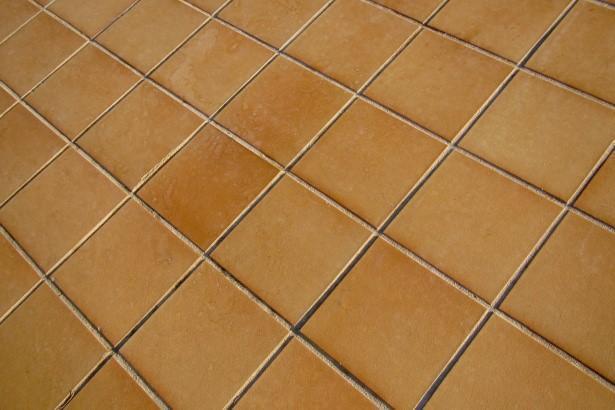Cutting tiles is a special type of job that requires precision and force at the same time. Simple at its core, it can be done with various tools, and there can’t be a consensus about which one is better. But there is an optimal choice for any situation. So, what are the best tools for cutting ceramic tile in your case? To find out, you can just learn which tools are available for this job and which ones will be the most convenient in your situation.
Why cut tiles
Ceramic tiles come in various shapes or sizes. They can be square, rectangular, triangular, and of more exquisite shapes. Sizes also vary wildly. There is just one thing for sure: they will never fit the floor or the wall of any room or hall without cutting. Proved by experience.
So, to cover the floor with tiles completely, you will have to cut them. That requires some calculation first: there are even specialized tile calculators that show how many tiles will be necessary for floors and walls of a certain perimeter. Then you will know how many tiles you need to cut. A correctly cut piece of tile would fit perfectly, making the ornament on the surface continuous. But for this, a cut should be precise.
Types of tile-cutting tools
Given how long humankind has dealt with ceramics, there are many multiple tools invented for this kind of work. Today’s tile cutting tools include the following groups:
- Tile scribes. These are the simplest tile cutting tools specialized knives designed to make straight cuts. With these, you need to be sure of your movements. And you better also draw a guideline right on your tile or press a ruler to make sure the cut is straight.
- Manual tile cutters. These machines are good if you need to cut tile from time to time, not once in a century (for that purpose, a tile scribe would fit better). While a manual tool, it has some power that makes cutting easier. Alas, it’s not used to cut stones or make minute cuts.
- Electric tile cutters. Simply put, these are electrified versions of manual tile cutters, enabling them to boost the worker’s productivity. They are usually heavier, though, and they need a socket, so they are great for stationary use.
- Wet tile saws. You need to place a tile on the holder and cut it with a saw that’s constantly watered. It is a great tool if you do a lot of this job. The water keeps the blade and the tile from getting too hot and reduces friction, making the cut smoother. Advanced models have features like laser guides or adjustable cut angles.
- Tile nippers. You need this tool to make some fine exquisite cutting for elements you need to bypass. It’s great for making minor cuts at the angles, though you’ll need to use a file after that because the cuts are always rough and need refining.
- Angle tile grinders. If you need an exquisite cut to leave a hole for some element (a tube, a hose, a hook, etc.), an angle tile grinder may do the job best. It allows for making curved cuts, which are often necessary for tiling floors and walls in toilets and bathrooms.
- Glass tile cutters. They are, in fact, modified tile scribes that require a ruler to provide straight cuts. The result is usually rough but can be fixed with a file.
- Rotary tools. These are, simply put, specialized disc saws for tile cutting. They are great for making small cuts in tiles. They are often called Dremels, though not all of them are made by the namesake manufacturer.
As you see, these tools are highly specialized, and not all of them are versatile. Some of them are great for professionals that cut tiles often, but for a one-time job, they are overkill. Others are simple and affordable, but they require force and precision. Finally, they are used differently, so they require different skills.
Which is the one for you?
To answer this question, you need to look at your work plan and see which specific needs you need to satisfy. In fact, you will hardly be good with just one of these tools: for example, if you need tile nippers, they are better used along with a manual cutter or a tile scribe. So are some other tools: using an angle grinder makes little sense for simple straight cuts, but for angle cuts, it’s irreplaceable.
So walk through all your rooms one more time, take a look at where you want to have your new tile, calculate your requirements once again, and answer some questions:
- Will you need curved cuts? Well, you’ll need tile nippers or/and an angle grinder. If not, forget about them.
- Will you have to do a lot of cutting? If so, you better use power tools, like an electric tile cutter or a wet tile saw. If not, a manual cutter or a glass cutter will do.
- Are there huge tiles among what you have chosen? Yes? Then maybe a wet saw is the answer. It will also make cutting smaller tiles simpler.
- Have you ever done this sort of job in your life? If so, don’t be afraid of manual tools with little automation. Otherwise, you’ll benefit from these seriously.
- Are you planning to work with tiles again anytime soon? If so, it makes sense to purchase better tools with more potential.
Conclusion
Hope this review has helped you to decide which tools you make for preparing tiles for your renewed home. All this variety exists for a reason; among these, you will find those you will surely need and can afford. If you want to share your own experience or ask your question, feel free to leave a comment in the section below!




